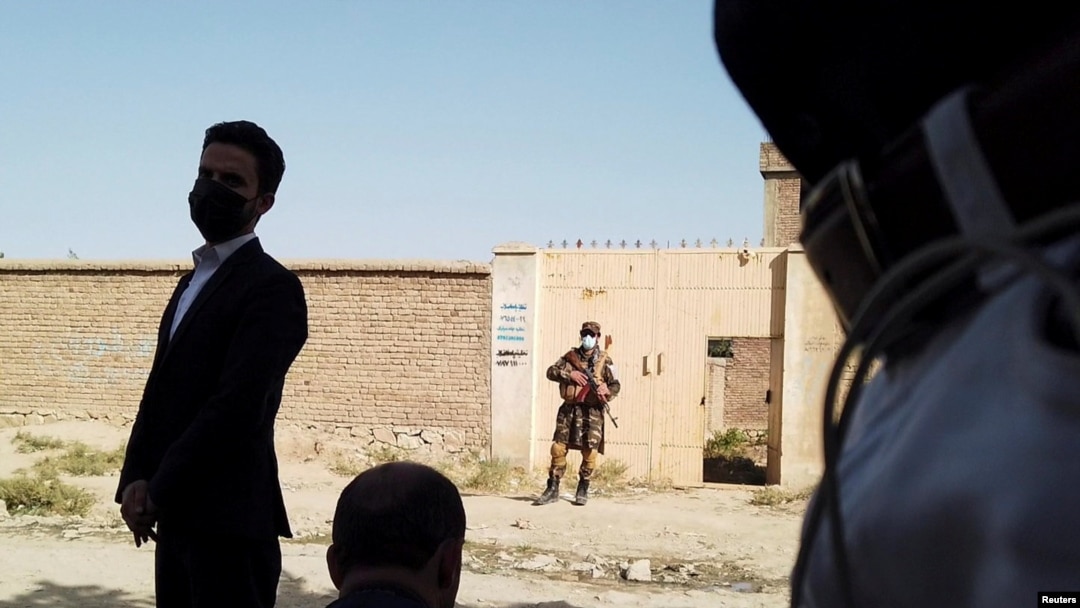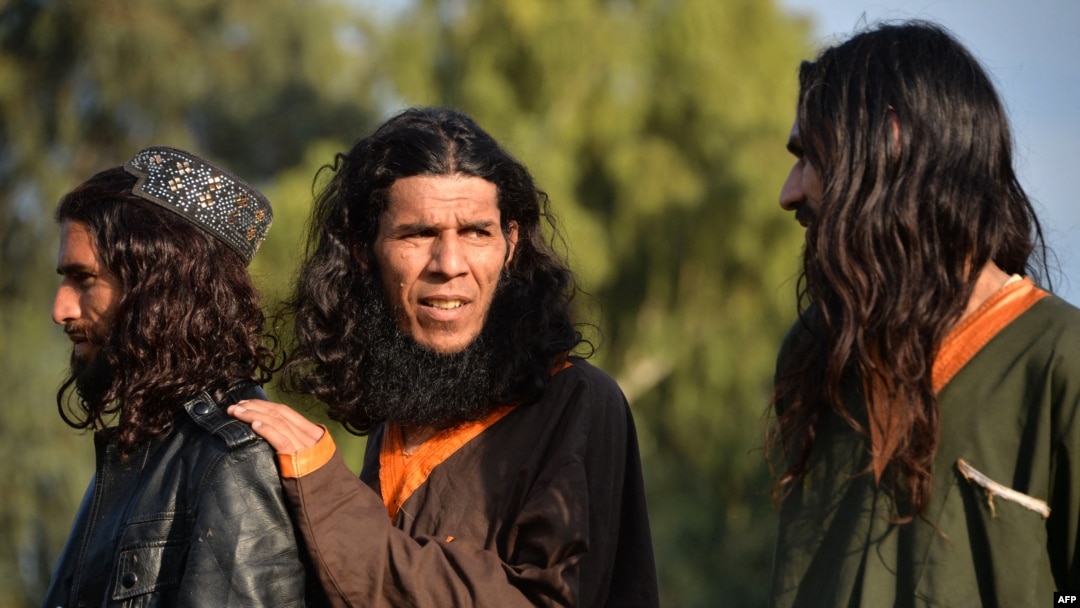Hakimullah, a resident of Afghanistan’s eastern province of Nangarhar, says he is routinely subjected to violence and discrimination because of his faith.
As a member of Afghanistan’s small Salafist community, an ultraradical sect under Sunni Islam, he says he is frequently targeted by the Taliban, the militant Islamist group that seized control of the war-torn country in August.
Many Taliban fighters are followers of the Hanafi school of Islam, a rival Sunni denomination. The Salafists, also known as Wahhabis, see many other branches of the faith as heretical.
Since seizing power, the militant group has waged a deadly crackdown on Salafists, who accuse the Taliban of detaining and killing members of the community. They also allege that the Taliban has raided and closed down dozens of their mosques and madrasahs, or religious seminaries.
SEE ALSO: HRW: Afghan Hazaras, Ex-Civil Servants Targeted By 'Collective Punishment,' Land-GrabbingThe Taliban’s clampdown on Salafists has coincided with its escalating war with rival Islamic State-Khorasan (IS-K) militants, many of whom are Salafists. There are believed to be several hundred thousand Salafists in Afghanistan, mainly concentrated in the eastern provinces of Nangarhar, Kunar, and Nuristan.
Salafists like Hakimullah say civilian members of the community are caught in the middle of the intensifying conflict between the two groups in eastern Afghanistan, an IS-K stronghold.
“Since the Taliban seized power and hastened war with Daesh, they have forced people who wear knitted caps and long beards out of their cars and abused them for being Salafists,” Hakimullah told RFE/RL’s Radio Azadi, using the Arabic acronym for IS-K.
Many Salafists wear kufis -- white, knitted skull caps -- and sport long beards.

A Taliban soldier stands guard in front of a house neighboring a IS-K hideout raided by Taliban forces in northern Kabul in early October.
Hakimullah says that many of his friends who are Salafists have been detained or killed by the Taliban in Nangarhar, the epicenter of clashes between the Taliban and IS-K militants.
“The Taliban view every Salafist as a member of Daesh, which is unfair because not everyone who follows the Hanafi faith is a Taliban member,” Hakimullah says.
In September, a senior Salafist cleric in Afghanistan, Sheikh Abu Obaidullah Mutawakil, was abducted and then found dead days later. The Taliban, which many Salafists blamed for the killing, denied it was responsible.
Observers say the Taliban’s deadly crackdown on Salafists could backfire and be used by IS-K as a recruiting tool.
“All this will eventually benefit Daesh because it will attract more recruits to its cause and will win broader support [among Salafists],” says Abdul Sayed, a Sweden-based researcher who tracks militant groups in the region.
The Taliban declared a general amnesty when it seized control of the capital, Kabul, on August 15. But human rights group accuse the Taliban of executing, torturing, and detaining its rivals, including members of Afghanistan’s former armed forces.
SEE ALSO: Afghan Hazaras Fear The Worst After Forced Taliban EvictionsThe Taliban denies targeting the Salafist community. But its rhetoric against Salafists has hardened in recent months.
Taliban officials have referred to Salafists as Kharijites, members of an early radical Islamic sect that are widely considered renegades.
“Members of the former army, police, intelligence and the Kharijites have once again been assured of the general amnesty,” the Taliban media center in Nangarhar tweeted on October 20.
The tweet cited a recent message attributed to Taliban chief Mullah Haibatullah Akhundzada. “The message calls on all those who have been involved in destructive activities against the Islamic Emirate in the past or present to return to their homes and areas and apologize,” it read.
The Salafist sect is a strict orthodox Islamic revivalist movement. It first emerged in the 18th century on the Arabian Peninsula. It has been linked to IS-K, its rival Al-Qaeda, and other transnational militant groups.
Salafism emerged in Afghanistan during the Soviet occupation of Afghanistan, when Arab Salafists arrived to fight alongside the mujahedin, the Islamist factions fighting against Soviet forces. Since then, Salafist schools and mosques have been built with funds from rich Arab states.
Your browser doesn’t support HTML5
Afghans Bury Loved Ones Killed In Mosque Bombing
The Hanafi school of Sunni Islam dominates Afghanistan and the wider South Asia and Central Asia region. It is followed by about one-third of the world’s Muslims, making it the school with the most adherents. Many Taliban leaders are followers of the 19th-century Deobandi Movement of British Colonial India, a hard-line strain of Hanafi Islam.
Since it first emerged in neighboring Pakistan in the early 1990s, the Taliban has allied itself with Al-Qaeda, a Salafist network, and absorbed smaller Salafist groups.
But the Taliban has opposed IS-K since its emergence in 2015, when turf wars erupted between the two movements. U.S. drone strikes and Afghan special forces also targeted IS-K strongholds in eastern Afghanistan.
Since the Taliban takeover of Afghanistan, there has been surge in IS-K attacks against the Taliban and Afghan civilians, especially the Shi’ite minority. IS-K considers Shi’a Muslims as apostates who should be killed.
Experts say the extremist group has been bolstered by the diminished U.S. counterterrorism presence in Afghanistan and the Taliban's inadvertent release of hundreds of IS-K inmates from prisons during its sweep of the country.
An IS-K suicide bomber blew himself up inside a Shi’ite mosque in the northern province of Kunduz on October 8, killing more than 70 people and injuring over 140. It was the deadliest attack since the international troop withdrawal on August 31.
Experts say IS-K is trying to recruit new fighters and undermine the Taliban’s hold on power.
“IS-K has launched dozens of attacks, and subsequent Taliban reprisals have targeted local Salafist communities,” says Andrew Mines, a research fellow at George Washington University in Washington.
“This is a historically marginalized population under the Taliban,” he adds. “IS-K will be looking to convince these communities that they cannot trust the Taliban and that joining IS-K is their only option.”
Observers say the Taliban’s intensifying rivalry with IS-K has signaled the beginning of another phase of war in Afghanistan.
It is a development that many Afghans dread will provoke further bloodshed.
Alam, a resident of Jalalabad, the provincial capital of Nangarhar, says his neighbor was abducted several days ago. The neighbor, an elderly man, taught at a local Salafist seminary.
“His whereabouts are unknown,” says Alam, who only revealed his first name for fear of reprisals. “His family doesn’t know whether he is alive or dead.”
“Not all Salafists are members of Daesh,” he adds. “Their persecution must stop.”


